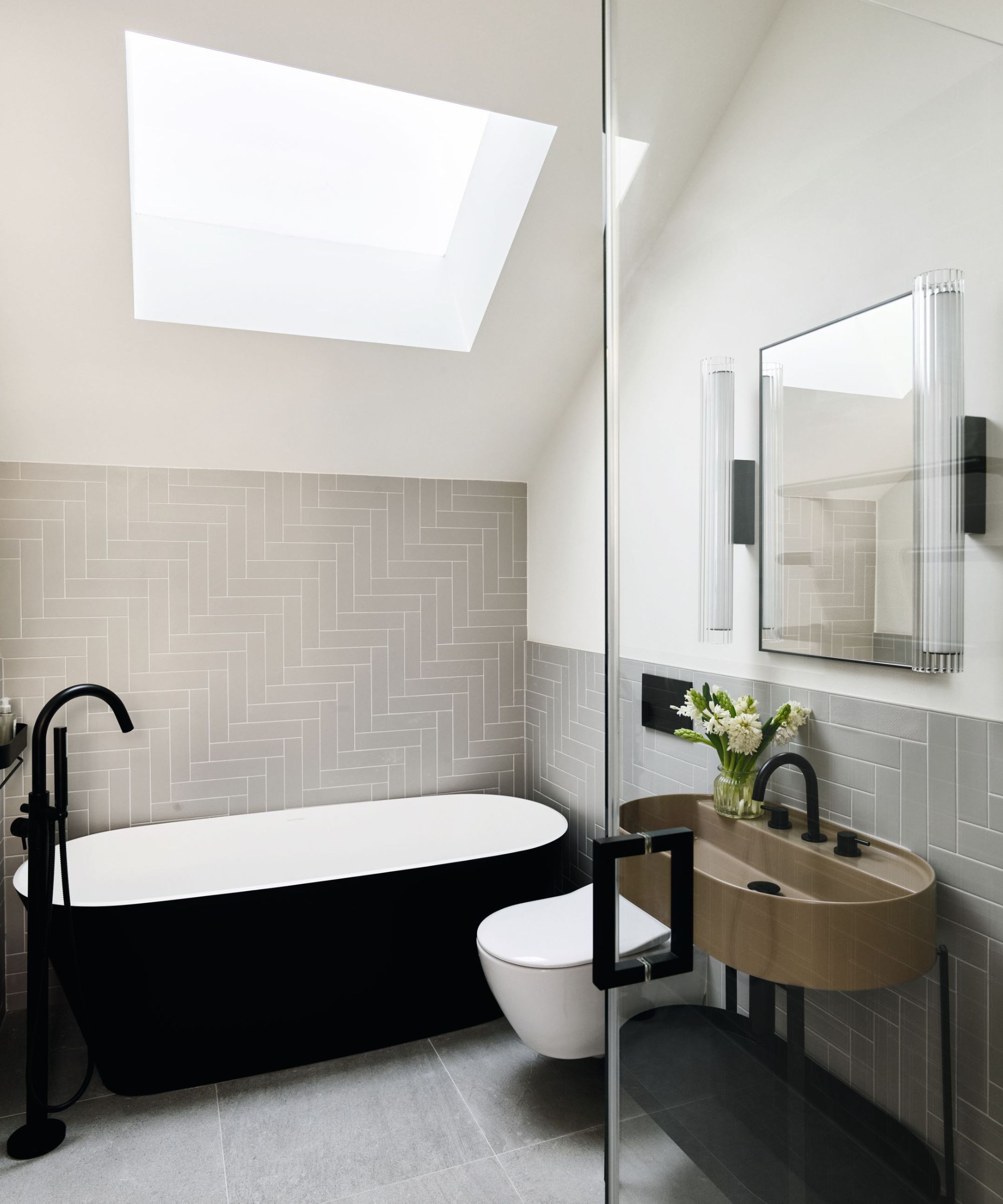
As most homeowners with an attic know, maintaing a comfortable temperature in this space year-round can be challenging due to its unique structural characteristics. However, whether you're looking for smart ways to keep your home warm in winter or keep your home cool in a heatwave, with these strategies below, you can ensure your attic remains a comfortable temperature throughout the changing seasons.
Achieving a consistently ideal temperature in your attic requires a multi-faceted approach that involves techniques – such as insulation and climate control devices – that effectively regulate the temperature, regardless of fluctuating conditions outside.
By implementing these techniques, you not only enhance the livability of your attic, which is especially important if you have an attic bedroom, but can also reduce energy consumption by minimizing both heating and cooling expenses, making this an eco-home improvement that can lead to significant savings on energy bills.
How to keep your attic at a comfortable temperature
Our experts have shared five key strategies to sustain a comfortable temperature in your attic, no matter the season.
However, each attic is unique, possessing unique features that will necessitate tailored solutions to achieve the ideal temperature. So, before implementing any methods, assess your attic's unique characteristics and any potential challenges to find the best strategies for your space.
1. Maximize insulation

'One of the best ways to keep your attic at a more comfortable temperature – cooler in the summer, and warmer in the winter – is by installing or improving the insulation in your home,' says Jon Bonnar, managing director at Cotswold Energy. 'Insulation acts like a blanket for your home by trapping heat during the winter and keeping warmth out during the summer.'
'Better insulation can help you cut energy bills, as you’ll be able to maintain a comfortable temperature year-round without having to plug appliances in, such as electric fans or air conditioning units.'
Ensure your loft has sufficient insulation in the roof, walls, and floor to prevent heat transfer. Be sure to choose quality insulation. Aim for at least R-40 insulation value in the ceiling.
There are various types of insulation to choose from, including fiberglass, wood fiber, cork, and superbead, each option with different considerations to evaluate, such as the cost to insulate an attic.
You can also improve insulation by filling any gaps around the edge of your attic with insulation tape, foam, and seals and adding draught excluders to doors.
'Additionally, up to 30% of unwanted heat comes through your windows, so preventing warmth from coming through in your attic if you have windows can save money, while lowering indoor temperatures by up to 20 degrees,' explains Jon Bonnar.
To do this, you can invest in energy-efficient windows that enhance insulation, reduce air leakage, block or reflect unwanted solar radiation, or simply weatherproof your windows by sealing gaps in windows.
This adhesive tape adheres well to practically any surface, whether smooth or rough, and can be used to create a vapor seal where large gaps occur, improving your loft insulation.
This caulking kit is the perfect tool to seal any cracks in your attic, whether around windows, floors, or ventilation points.
For any gaps in your attic that need to be sealed before insulation is installed, this expandable insulating foam can ensure no heat is let in or out of your loft, ideal for maintaining a comfortable temperature.
2. Improve natural ventilation

Since heat rises, attics can become uncomfortably warm if they aren't well-ventilated. To ventilate an attic, consider installing strategically placed skylights, roof vents, or windows that can be opened to allow hot air to escape and cooler air to circulate.
Skylights equipped with auto-opening and closing features, along with ventilators like exhaust fans, offer effective solutions for maintaining a comfortable temperature in your attic year-round. Through timed routines, you can make the most of natural ventilation by scheduling them to open or activate at specific times of the day when temperatures are cooler while automatically closing or deactivating during unfavorable weather conditions, ensuring efficient temperature control.
'Ceiling fans can also help circulate air within the attic, creating a breeze that makes the environment feel cooler,' adds Josh Mitchell, HVAC technician and the owner of Air Conditioner Lab. 'Ensure your ceiling fan is set to rotate counterclockwise during the summer. This fan direction trick will cool the room down more quickly as it pushes the cooler air down.'
3. Use reflective materials on your roof
Using reflective roofing materials can help to reflect a significant amount of heat from sunlight away from your home, minimizing heat absorption.
'A low-cost and low-tech solution to keep your attic cool is painting your roof white and adding a special reflective coating on top,' says Jon Bonnar. 'This will reduce the heat absorbed through your roof by acting as a heat shield, typically lowering the temperature inside your home by up to five degrees Celsius.'
Additionally, using metal roofing, especially those with light color finishes, over traditional materials like asphalt shingles or tiles can reflect more sunlight. However, you can find reflective asphalt shingles designed with reflective granules or opt for light-colored roofing tiles, such as clay or concrete tiles, which have reflective properties.
4. Utilize window treatments

Using window treatments and coverings is another great way to keep your attic warm in winter and control heat in summer.
Blackout blinds, reflective window coverings, or thick curtains can block intense sunlight and decrease heat buildup during scorching summer days. Then, they can be opened up in winter to allow warming solar heat gain.
If you want a way to avoid having sunlight heat up your attic without sacrificing natural light, reflective window film, such as this Coavas heat control film from Amazon, can reflect most of the heat from outside, reducing the amount of heat that passes through the window glass without blocking your view.
'Awnings over windows are another effective way to block solar heat gain,' adds Justin White, installation expert and VP of Marketing at Overhead Doors. 'I built simple wooden awnings over my loft windows, and it made a huge difference in blocking the sun while still allowing in light.'
5. Use sustainable climate control appliances

Installing reliable air conditioning is one of the most effective ways to ensure your loft remains at a comfortable temperature. However, unlike the other strategies this will hike up your electricity bill, so should ideally be used in combination with other techniques.
'If your attic requires an assisted heating/cooling solution, opt for high-efficiency models specifically designed for attic spaces,' recommends Maria Opre, a senior analyst at EarthWeb. 'Look for units with strong SEER (cooling) and HSPF (heating) ratings – the higher the number, the less energy consumed.
'A mini-split system is particularly suitable for attics because it doesn't require ductwork and can be targeted to cool and heat specific areas efficiently,' explains Josh Mitchell. 'Ensure the system is properly sized for your space to optimize energy use and comfort.'
'If installing a permanent air conditioning system isn't feasible, portable air conditioners or evaporative coolers can be an effective alternative,' says Gordon Chalk, co-managing director at Next Level Underfloor Heating And Screed Solutions. 'These devices deliver targeted cooling to specific loft regions, allowing you to keep a pleasant temperature without using large HVAC systems. Place the units strategically where cooling or heating is most required, such as near windows or in the center of the loft.'
Finally, Josh Mitchell, HVAC Technician, advises: 'Ensure that all your cooling systems are regularly maintained. Check filters, refrigerant levels, and electrical connections.
'Before the warm season starts, clean your HVAC or get it serviced by an HVAC service professional. Change the air filter every 30 to 90 days depending on the conditions and usage.'







